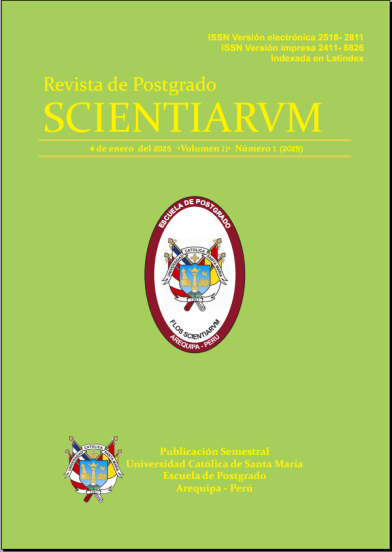LA ADOPCIÓN POR EXCEPCIÓN DE NIÑOS, NIÑAS Y ADOLESCENTES POR PARTE DE CONVIVIENTES Y LA APLICACIÓN DEL CONTROL DIFUSO
THE ADOPTION OF CHILDREN AND ADOLESCENTS BY COHABITANTS BY EXCEPTION AND THE APPLICATION OF DIFFUSE CONTROL
Oscar Enrique Gamero Gonzales1
- Universidad Católica de Santa María, Arequipa - Perú
RESUMEN: La adopción de niños, niñas y adolescentes es una de las formas permitidas por la ley para generar un vínculo de parentesco con una persona con la que no se comparte ningún nexo biológico o consanguíneo. Sin embargo, cuando se habla de la adopción por excepción, el Código de los Niños y Adolescentes solamente contempla dos supuestos, el primero de ellos referido a cuando el adoptante posee vínculo matrimonial con el padre o madre del niño, niña o adolescente por adoptar; y el segundo supuesto está referido a cuando se posea vínculo de parentesco hasta el cuarto grado de consanguinidad o segundo de afinidad. Sin embargo, en la práctica se inician procesos judiciales donde la parte demandante no tiene vínculo matrimonial con el padre o madre, y tampoco tiene ningún grado de consanguinidad o afinidad con el niño, niña o adolescente a adoptar, sino que es conviviente del padre o madre.
En este artículo se analizará la posibilidad que tienen los convivientes de poder adoptar como suyo, al hijo o hija de su conviviente, esto dentro del marco de la tramitación de un proceso judicial de adopción por excepción, y cómo el Juez de Familia, aplicando el principio del Interés Superior del Niño, Niña o Adolescente, puede buscar una solución aplicando el Control Difuso.
Palabras clave: Adopción, familia, convivencia, control difuso.
ABSTRACT: The adoption of children and adolescents is one of the ways allowed by law to generate a kinship bond with a person with whom no biological or blood link is shared. However, when it comes to adoption by exception, the Children and Adolescents Code only contemplates two cases, the first of which refers to when the adopter has a marital bond with the father or mother of the child or adolescent to be adopted; and the second case refers to when there is a kinship relationship up to the fourth degree of consanguinity or second degree of affinity. However, in practice, judicial proceedings are initiated where the plaintiff does not have a marital bond with the father or mother, nor does he or she have any degree of consanguinity or affinity with the child or adolescent to be adopted, but is a cohabitant of the father or mother.
This article will analyze the possibility that cohabitants have of being able to adopt as their own, the son or daughter of their cohabitant, this within the framework of the processing of a judicial process of adoption by exception, and how the Family Judge, applying the principle of the Best Interests of the Child or Adolescent, can seek a solution by applying the Diffuse Control.
Keywords: Adoption, family, cohabitation, diffuse control
Revista Seleccionada
Enero 2025 Volumen 11 - Número 1 P 19-25
DOI: 10.26696/sci.epg.0196
Enlaces
CIENCIAS SOCIALES Y HUMANIDADES
LA ORALIDAD EN EL ÁMBITO PENAL Y CIVIL, DE LO TEÓRICO A LO PRÁCTICO
IMPACTO DE LA CREACIÓN DE VALOR COMPARTIDO EN LA INDUSTRIA MINERA LATINOAMERICANA
CIENCIAS BIOLÓGICAS Y DE SALUD
PRESENCIA DE SALMONELLA TYPHI EN UNA BEBIDA TÍPICA PERUANA “PISCO SOUR”, AREQUIPA 2023

